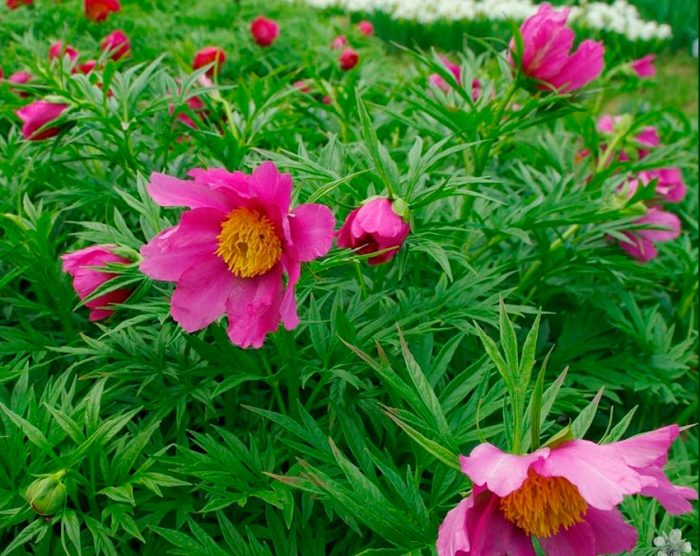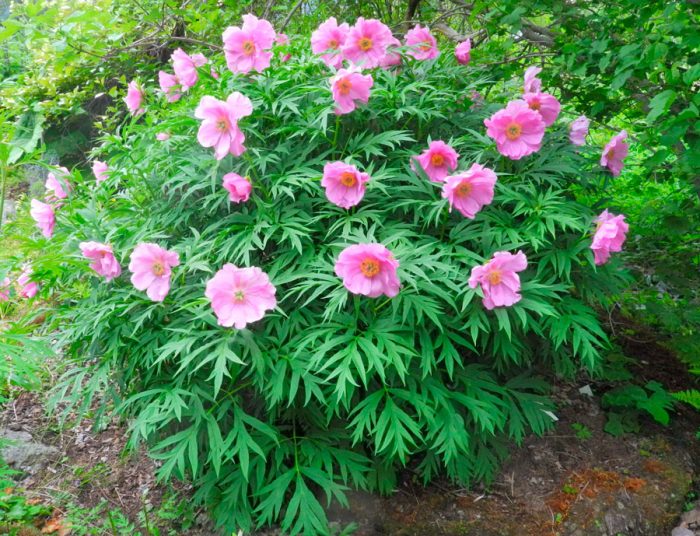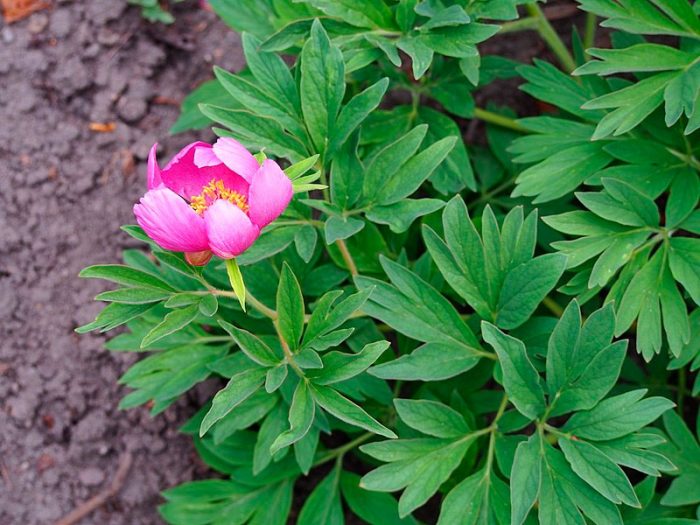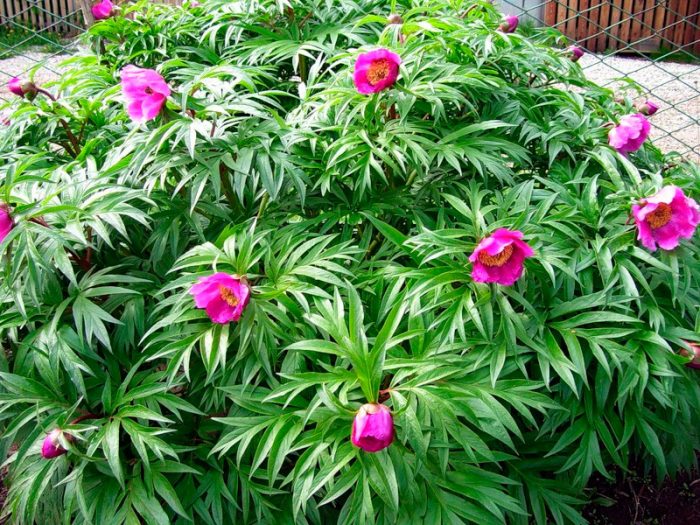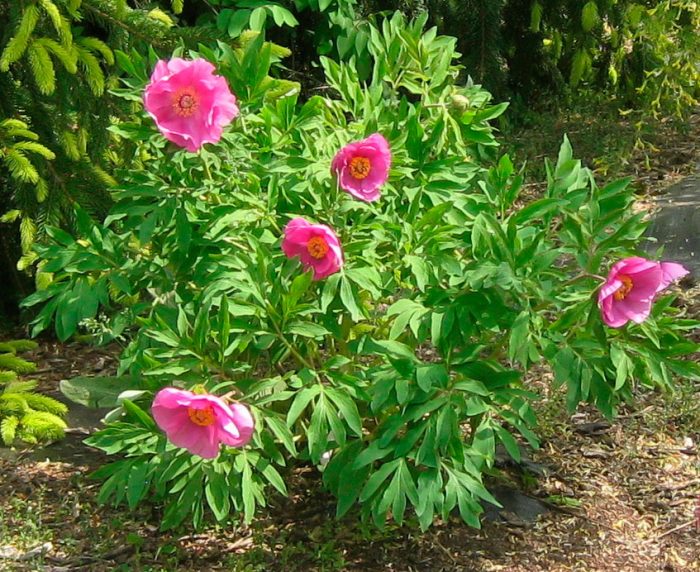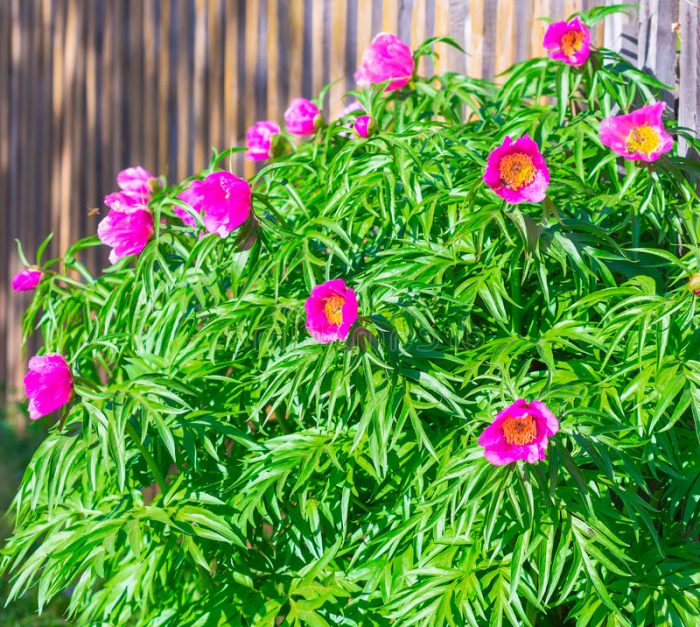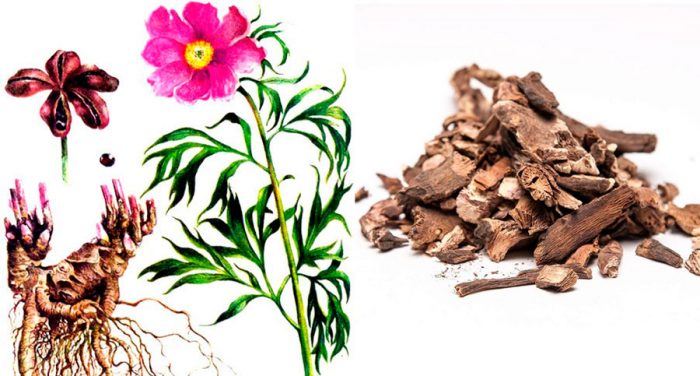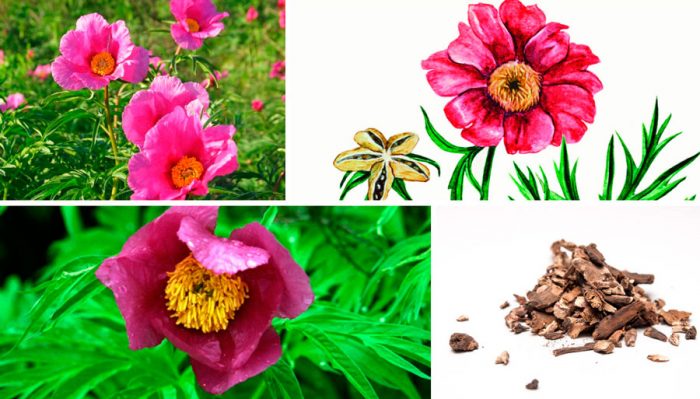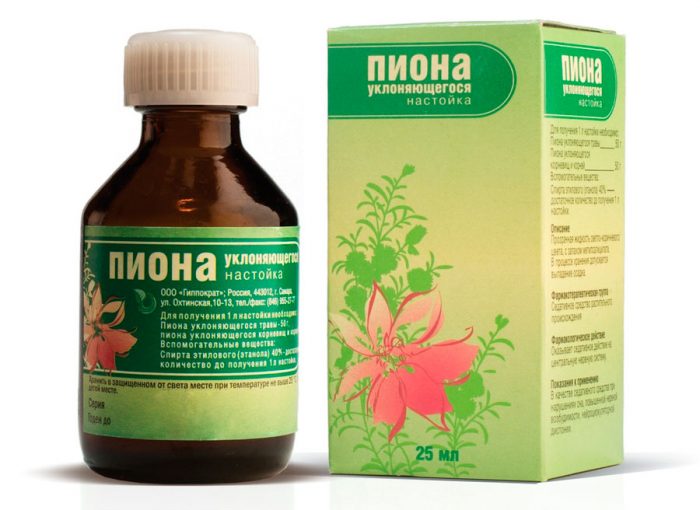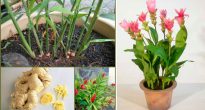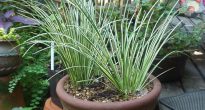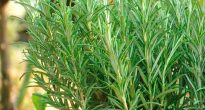The herbaceous perennial plant Maryin root (Paeonia anomala), also called extraordinary peony, or Maryin root peony, or evading peony, or irregular peony, is a species belonging to the genus Peony. Most often, such a plant is found on the territory of Siberia, but it prefers to grow in meadows, in river valleys, on the edges and glades of mixed forests. This species is one of the endangered species, and it is included in the Red Book of the Komi Republic. In the name of the species, the word "anomala", translated as "unusual" or "incorrect", appeared due to the fact that in autumn this plant differs from other representatives of the Peony genus in its color. This species has been cultivated since 1788. Gardeners grow such a peony as a medicinal and ornamental plant. As a medicinal plant, the most famous is the name of this genus - Maryin root.
Content
Features of Mary's root
The herbaceous rhizome plant Maryin root has a furrowed stem, the height of which can reach 1.2 m. The root system of such a plant is horizontal. It consists of a thick fusiform tuber, as well as a branchy shortened brown root. The white flesh of the root has a sweetish taste and a pungent aroma. The petiole leaf plates, twice triple-dissected into lanceolate lobes, are about 0.3 m long and the same width. Flowers in diameter reach from 10 to 12 centimeters, they consist of 5 petals painted in purple or pink, there are also many stamens. Flowering begins in May or June. The fruit is 3-5 leaflets, in which glossy black seeds should ripen in the first days of August.
Growing Mary's Root
Planting Mary's root
For propagation of the marin root, the seed and vegetative method are used. If there is such a peony in the garden, then the bush can be propagated by dividing the rhizome. Using a very sharp tool, it must be cut into several parts, while taking into account that each delenka must have kidneys and roots. Places of cuts should be sprinkled with crushed coal. Then the cuttings are left in the open air so that the slices can dry out.To plant them, you need to prepare holes 50x50x50 centimeters in size, which you need to fill 2/3 with a mixture consisting of garden soil, sand and humus, you also need to pour 20 grams of superphosphate and potassium salt into it. The pits, with the divisions placed in them, are covered with nutritious soil, its surface is tamped. The planted cuttings need abundant watering. When planting, it is necessary to take into account that the distance between the bushes should be at least 0.7 m. The evading peony is transplanted and divided in the autumn period in the evening or on a rainy day. After planting, the plant will not bloom during the first season. Next year, the marin root will bloom, but the bloom will not be abundant, since the plant needs time to gain strength.
You can also grow this culture from seed. The seeds you have harvested yourself need a two-step stratification. To begin with, the seed is combined with moistened sand, where it should stay for 8-12 weeks at a temperature of about 20 degrees. After that, it is placed on a refrigerator shelf intended for vegetables for 6 months. Sowing material, which was stored for 12 months at room temperature, is sown in open soil before winter. In springtime, seedlings should appear, which need to be looked after for 2 years. Only after that, the plant can be transplanted to a permanent place, keeping a distance of 0.7-1 m between the bushes.
You can grow a dodging peony in both shaded and well-lit areas. The soil needs a well-drained soil, which contains a large amount of organic matter. If the soil is poor, then compost or humus must be added to it for digging. Acidic soil can be corrected by adding slaked lime.
Care of the maria root
Maryin root is distinguished by its undemandingness, and it is also unpretentious in care. Therefore, it is quite simple to grow it on your site.
Watering
This plant does not need frequent watering. At a time, under 1 bush, pour from 20 to 30 liters of water. In order to prevent the spread of water over the site during irrigation, it is recommended to dig in pipe sections around the bush. If water is poured directly into them, then it will be absorbed into the soil layer in which the root system of the Mary's root is located. In early spring, during the period of bud formation, and even during the laying of flower buds in August, the bush especially needs a sufficient amount of moisture. When it rains or the plants are watered, you need to loosen the surface of the soil near the bushes. You should also pull up all the weeds.
Fertilizer
While the plant is young, it is recommended to feed it by foliar method. Such dressings begin to be carried out regularly in May. To do this, once every 30 days, the bushes must be watered from a watering can, using a solution of Ideal or other mineral fertilizer. In this case, in 1 bucket of nutrient solution, before watering, you need to put 1 large spoonful of washing powder or liquid soap. It is recommended to feed the evading peony in this way in the evening or on a cloudy day.
During intensive growth, adult plants need to be fed by foliar method 3 times with an interval of 20 days. And it is necessary to start such feeding from the second half of May. During the first feeding, a urea solution is used (50 grams of substance per bucket of water). For the second feeding, one micronutrient tablet is dissolved in 1 bucket of a nutrient mixture containing urea. For the third feeding, a nutrient solution is taken, consisting of 1 bucket of water and two micronutrient tablets.
It is recommended to feed adult bushes by the root method, but it should be borne in mind that in each period of development they need certain substances.At the beginning of the growing season, the Maryin root needs nitrogen, during the formation of buds and flowering, it needs phosphorus, nitrogen and calcium, and during the laying of flower buds for the next year, phosphorus and potassium. In this regard, during one season, the bush should be fed 3 times by foliar method:
- In the last days of March or the first days of April, 10 to 15 grams of potassium-nitrogen fertilizer must be applied to the soil under one large plant. If at this time there is still snow on the site, then the granules must be evenly distributed over its surface. When the snow begins to melt, the nutrients needed by the plant will penetrate the soil along with the melt water.
- In the last days of May or the first - June, the bushes are fed using a phosphorus-nitrogen-potassium solution (20:10:10). Instead of such a solution, you can take organic matter. So, the bushes can be shed with a solution of mullein (1:10) or bird droppings (1:25).
- After the plant has faded, after half a month, 15 grams of potassium fertilizer and the same amount of superphosphate should be added to the soil under the bush. A groove must be made around the plant, in which the required amount of fertilizer is evenly distributed. Then it is spilled with a large amount of water and covered with soil.
Wintering
During the preparation of the plant for winter, its shoots must be cut almost to the very surface of the soil. Then the bush must be covered with wood ash from above, two or three handfuls should be enough. It is necessary to shelter for the winter only young specimens that are under 3 years old. And adult bushes do not need shelter, as they have a fairly high frost resistance.
Diseases and pests
Such a plant is highly resistant to diseases and pests. However, it can, under certain circumstances, get sick with gray rot. In order to prevent this and another fungal disease, the bushes need to be treated with a solution of Bordeaux liquid 3 times (50 grams of the substance is taken for 1 bucket of water). Marin root is sprayed in the spring after the appearance of young shoots, then it is treated a couple more times with an interval of 10-12 days. When spraying one bush, 2 to 3 liters of solution should go away.
Such a culture is also susceptible to rust infection. For prevention purposes, the plant is treated with a solution of copper oxychloride (60 grams of the substance and a small amount of liquid soap are taken for 1 bucket of water). You can replace it with a solution of Bordeaux mixture (see above) or colloidal sulfur (100 grams of substance per bucket of water).
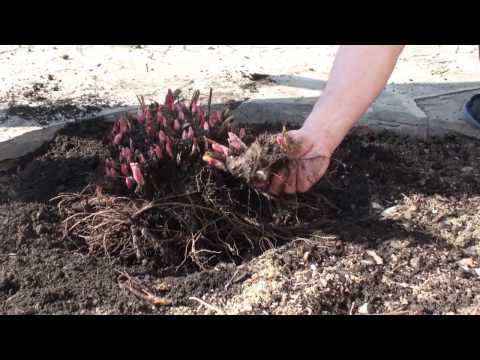

Watch this video on YouTube
Collecting Mary's Root
As ornamental plants, as a rule, garden varieties and hybrids of the evading peony are grown. And the species plant does not have such a spectacular appearance, therefore, as a rule, it is cultivated to obtain medicinal raw materials, while it must be borne in mind that it can only be harvested from bushes with purple flowers.
The collection of medicinal raw materials is carried out 1 time in 5 or 6 years, while the preparation of both roots and herbs is produced. It is possible to collect raw materials throughout the growing season, but it is best to do this in the autumn. Digging the entire bush is not worth it. First, using a sickle or a very sharp knife, you need to cut off the part of the bush located above the ground. It should be noted that for drying and storage, the roots and grass of such a plant are placed separately from each other. The collection of petals is carried out as soon as they begin to fly around. They are placed in the shade for drying.
Harvesting of roots is carried out throughout the entire growing season. It is necessary to remove soil residues from the dug roots, then they are washed under cold running water and divided with a knife into strips, which should be no more than 15 centimeters long and about 30 mm thick. They are laid out under a canopy or in a semi-dark, well-ventilated room, where it should be cool.Raw materials must be dried until they become brittle. After that, they must be dried in the dryer, setting the temperature to about 60 degrees. When the raw material is ready, it will turn dark brown or brown-yellow in color, and it will taste a little sweet and pungent.
Foliage and shoots should also be dried in a shaded area under a canopy. After the raw material becomes brittle, it is crushed.
Storage
Such medicinal raw materials have a shelf life. It can be stored and used for no more than three years, and then the remaining raw materials are destroyed. Dried petals, foliage, buds and shoots should be kept away from the roots. For storage, raw materials prepared from any part of the plant are poured into dark-colored cardboard boxes. Before using it for its intended purpose, you should check whether the dried peony evading odors are unusual for it.
Properties of Mary's root: harm and benefit
Medicinal properties of Mary's root
A plant such as peony marin root contains flavonoids, essential oil, tannins, sterols, saponins, sugars and resins, gallic and salicylic acids.
The use of the roots of this plant helps to eliminate stress and fatigue, to recover quickly after prolonged binge drinking, to improve metabolic processes in the body and to remove toxins. They also have a positive effect on the state and functioning of the nervous system.
This plant promotes the production of endorphin, which is the hormone of happiness, so that a person has an improvement in mood without any unwanted side effects. This plant is used in the treatment of headaches, coughs, gastritis, gastric and duodenal ulcers, gout, epilepsy, malaria, asthma, diarrhea, insomnia, hysteria and skin diseases. The evading peony helps in the presence of "female" problems, namely: it helps to cure mastopathy, infertility, erosion and fibroids, it is also used for uterine bleeding. It is recommended to use such medicinal raw materials for men in order to get rid of impotence. Tincture on the roots of this plant has a sedative effect, eliminates feelings of anxiety, anxiety and fatigue, and helps with insomnia. Even such a root is able, when used as a cosmetic, to improve the condition of the skin, namely, to get rid of acne and acne, as well as oily sheen. This plant will also help with eczema.
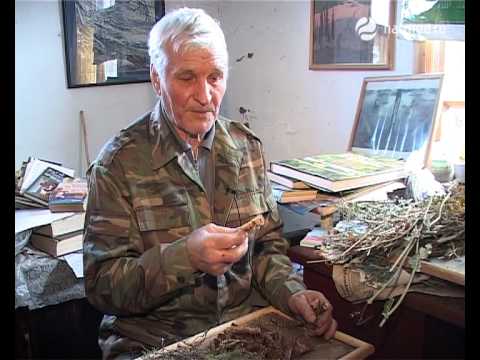

Watch this video on YouTube
Contraindications
The root of the evading peony contains poison, therefore, using funds based on it, it is imperative to adhere to the recommended dosage, in no case exceeding it. Tinctures and decoctions prepared using such a root are forbidden to use for gastritis with high acidity and hypotension. They can also not be taken during pregnancy, as well as children under 12 years old. But even a healthy adult should consult a qualified specialist before taking any remedy prepared on the basis of marin root.

